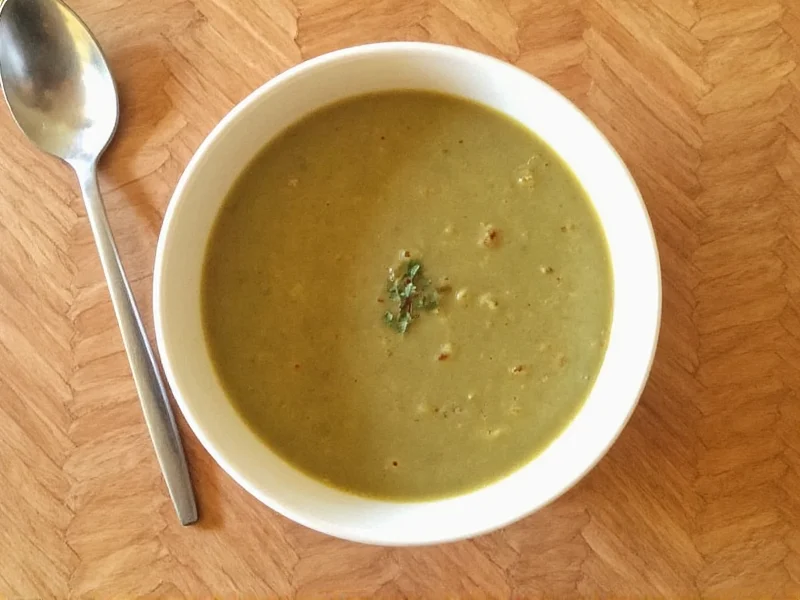Creating delicious homemade soup doesn't require culinary expertise or specialty equipment. With the right approach, anyone can prepare satisfying, nutritious soups using basic kitchen tools and common ingredients. This guide shares practical techniques and recipes that transform simple components into comforting meals perfect for busy weeknights.
Why Simple Soups Belong in Your Recipe Rotation
Simple soups offer remarkable versatility while delivering substantial nutritional benefits. Unlike processed alternatives, homemade versions let you control sodium levels and incorporate fresh produce. According to USDA dietary guidelines, soups featuring vegetables and legumes contribute significantly to daily fiber and vitamin intake. The beauty of easy soup recipes lies in their adaptability—they accommodate dietary restrictions, seasonal produce, and personal taste preferences without complicated techniques.
Essential Tools for Effortless Soup Making
You don't need professional equipment to create excellent soups. These basic kitchen items form the foundation for successful simple soup preparation:
| Tool | Why It Matters | Simple Soup Application |
|---|---|---|
| 6-8 quart stockpot | Adequate space prevents boiling over | Ideal for batch cooking vegetable or bean soups |
| Immersion blender | Creates smooth textures without transferring hot liquid | Perfect for creamy tomato or butternut squash soups |
| Sharp chef's knife | Efficient vegetable preparation | Chopping onions, carrots, and celery for mirepoix base |
| Wooden spoon | Prevents scratching pots and ensures even stirring | Stirring grains and legumes during cooking |
Pantry Staples for Quick Soup Assembly
Maintaining these basic ingredients ensures you're always prepared to make simple soups with minimal effort. Stock these essentials for versatile weeknight soup recipes:
- Broths: Low-sodium vegetable, chicken, or beef broth (canned or carton)
- Canned goods: Diced tomatoes, tomato paste, beans, and lentils
- Aromatics: Onions, garlic, celery, and carrots (fresh or frozen)
- Seasonings: Dried thyme, bay leaves, salt, and black pepper
- Thickeners: All-purpose flour or cornstarch for creamy textures
Five Foolproof Simple Soup Recipes
1. 20-Minute Tomato Basil Soup
This easy homemade soup recipe requires just six ingredients and one pot. The fresh basil added at the end creates vibrant flavor without lengthy cooking.
Ingredients
- 2 (28-ounce) cans crushed tomatoes
- 1 small onion, finely chopped
- 2 cloves garlic, minced
- 2 cups vegetable broth
- 1/4 cup fresh basil, chopped
- 2 tablespoons olive oil
Instructions
- Heat olive oil in large pot over medium heat
- Sauté onion and garlic until translucent (5 minutes)
- Add tomatoes and broth, bring to gentle simmer
- Cook 15 minutes, stirring occasionally
- Remove from heat, stir in fresh basil
- Blend with immersion blender for smooth texture (optional)
2. One-Pot Chicken Noodle Soup
This beginner-friendly soup recipe uses cooked chicken for faster preparation. The entire dish cooks in a single pot with minimal cleanup.
Key Technique
Add noodles during the last 8-10 minutes of cooking to prevent overcooking. For gluten-free version, substitute rice or quinoa.
3. 30-Minute Lentil Vegetable Soup
Packed with plant-based protein, this simple soup recipe requires no soaking time for the lentils. Brown or green lentils hold their shape better than red varieties for this application.
Pro Tip
Add a splash of vinegar or lemon juice at the end to brighten flavors and enhance nutrient absorption from the vegetables.
4. Creamy Roasted Red Pepper Soup
This elegant yet simple soup comes together quickly using jarred roasted peppers. The recipe demonstrates how quality prepared ingredients can elevate basic soup recipes.
Ingredient Substitution
When fresh peppers are in season, roast your own by placing whole bell peppers under broiler until charred, then steaming in covered bowl before peeling.
5. Minestrone Soup with Pantry Staples
This Italian-inspired vegetable soup showcases how to create complex flavors from basic ingredients. The secret lies in building layers of taste through proper sautéing technique.
Flavor Boost
Add a Parmesan rind while simmering for authentic depth of flavor—remove before serving. This technique works equally well in bean soups and tomato-based recipes.
Mastering Soup Consistency
Understanding how to control texture separates good soups from great ones. These techniques help achieve perfect consistency in simple soup recipes:
- Thickening: Create a slurry with equal parts cornstarch and cold water for gluten-free thickening
- Thinning: Add additional broth or water in small increments until desired consistency reached
- Creaminess: Blend half the soup, then return to pot for creamy texture without dairy
- Body: Mash some beans or potatoes against pot side to naturally thicken vegetable soups
Storage and Reheating Guidelines
Proper storage extends the life of your simple soups while maintaining quality. Follow these evidence-based recommendations:
- Cool soups completely before refrigerating (within 2 hours of cooking)
- Store in airtight containers for up to 4 days in refrigerator
- Freeze in portion-sized containers for up to 3 months
- Reheat gently over medium-low heat to preserve texture
- Add fresh herbs and a splash of acid (lemon juice/vinegar) after reheating
Troubleshooting Common Soup Issues
Even simple soup recipes occasionally present challenges. These solutions address frequent beginner concerns:
- Too salty: Add peeled potato chunks and simmer 15 minutes (remove before serving)
- Bland flavor: Balance with small amounts of acid (lemon juice) or umami boosters (soy sauce)
- Cloudy appearance: Avoid boiling vigorously; simmer gently for clearer broth
- Vegetables too soft: Add delicate vegetables during last 5-10 minutes of cooking
- Fat separation: Skim excess fat with spoon or chill and remove solidified fat layer
Adapting Simple Soups for Dietary Needs
The beauty of basic soup recipes lies in their adaptability. These modifications maintain simplicity while addressing common dietary requirements:
- Vegan: Substitute vegetable broth for meat-based broths; use coconut milk instead of dairy
- Gluten-free: Ensure broth is certified GF; use cornstarch instead of flour for thickening
- Low-sodium: Use no-salt-added broths and enhance flavor with herbs and citrus
- High-protein: Add cooked lentils, beans, or shredded chicken during final minutes











 浙公网安备
33010002000092号
浙公网安备
33010002000092号 浙B2-20120091-4
浙B2-20120091-4